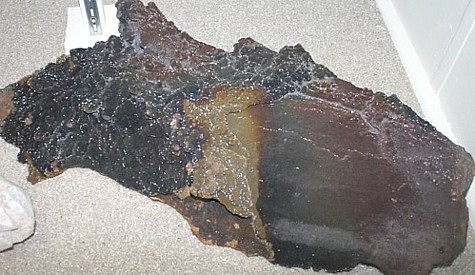
| SIDERITE MINERAL FACTS |  |
|
| The Gem and Mineral Collector's Photo Gallery by Nevada Outback |
|
. Siderite Mineral Facts: Chemical Formula: Fe2CO3 Colors: Normally yellow to brown. Sometimes white. Streak is white. Hardness: 3.5 to 4.0 Density: 4.5 to 5 Cleavage: Perfect rhombohedral cleavage (cleavage angle = 107). Crystallography: Hexagonal-rhombohedral. Luster:. Vitreous luster. Optics: (Refractive Index): w=1.875; e=1.633 |
|
|
Identification and Diagnostics
Occurrence,
Localities and Origins: The mineral is often found accompanying metallic ores in veins. It occurs also as nodules in certain clays and in the coal measures. In some cases it appears to be a direct deposit from solutions. In others it is a result of metasomatism and in others is an ordinary weathering product. Usually cleavable granular. At times botryoidal,compact and earthy. More rarely in crystals. Occasionally it exhibits a curious radiating form, with a rude, sub-columnar structure, causing it, when struck, to fall to pieces in conical masses, which envelop or cap one another, and to which the name of "cone in cone" structure has been given. Return to the Mineral Collectors Information Page |
|
|
 |
||
Please note that the author, Chris Ralph, retains all copyrights to this entire document and it may not be reproduced, quoted or copied without permission.

NEVADA OUTBACK GEMS TURQUOISE AND JEWELRY